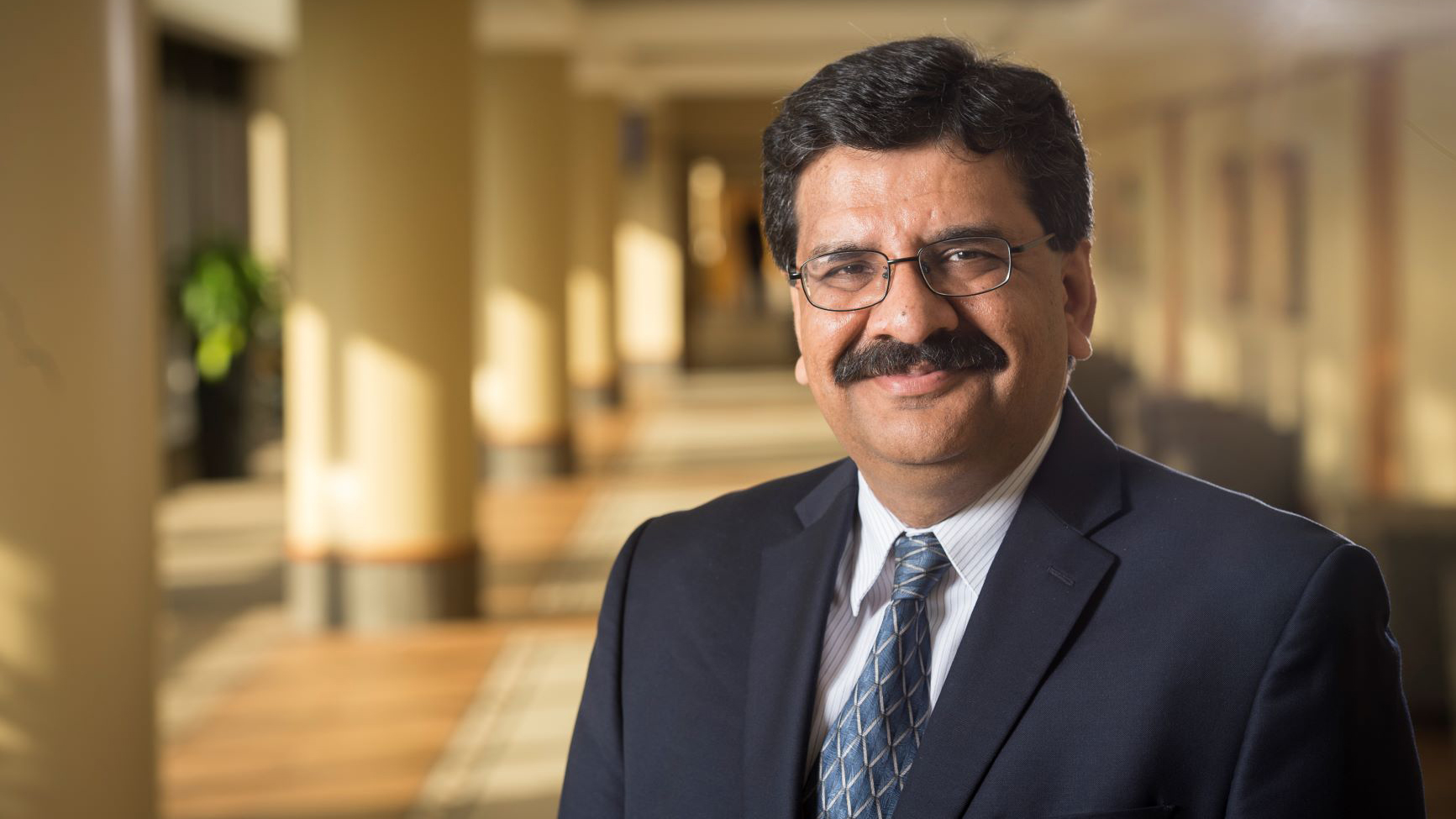

Ravi Bhatia, M.D., professor in the Department of Medicine, deputy director of the O'Neal Comprehensive Cancer Center, and division director in Hematology and Oncology, is the latest winner of the School of Medicine’s Featured Discovery. This initiative celebrates important research from the School of Medicine faculty members.
Dr. Bhatia and colleagues from UAB, University of Zurich, and Osaka University discovered that TKIs (drugs that most leukemia patients are treated with) do not eliminate disease-propagating leukemic stem cells (LSC), providing a new understanding of niche-dependent regulation of chronic myelogenous leukemia (CML). Expression of the chemokine CXCL12, by a particular type of bone marrow niche cell, controls quiescence of treatment-resistant leukemic stem cells.
The researchers found that deleting CXCL12 from the mesenchymal stromal cells, but not from other CXCL12-expressing bone marrow cell types, enhanced leukemia development and reduced the survival rate in mouse models. These results were related to an increase in cell cycling and an expansion of CML stem cells. However, the cycling leukemia stem cells became sensitive to tyrosine kinase treatment, resulting in their increased depletion.
Bone marrow imaging studies revealed that stromal cells reorganized to co-localize with leukemia stem cells in discrete bone marrow regions. These regions of co-localized mesenchymal stromal cells and leukemia stem cells were lost upon CXCL12 deletion, further supporting the importance of CXCL12 expression.
This knowledge, published in Cell Stem Cell, is crucial to understanding and developing new leukemia treatments and cultivating new therapies. Read more from UAB News here.
The School of Medicine communications staff sat down with Dr. Bhatia to gain insights about his research, UAB, and the science community.
Q: What compelled you to pursue this research?
The inability of current treatments to eliminate leukemia stem cells that propagate disease is a major barrier to curing leukemia. We were interested in studying bone marrow niches (where leukemia stem cells reside) and exploring their role in protecting leukemia stem cells from the effects of treatment and promoting relapse.
Q: What was your most unexpected finding?
Normal bone marrow hematopoietic stem cells are located to and preserved by CXCL12 expressing mesenchymal stromal cell niches. Targeting these niche cells depletes normal stem cells. We thought that targeting the same niche cells in leukemic mice would also result in depletion of leukemia stem cells. However, we were surprised to find accelerated leukemia development instead.
Q: What is your research’s relevance to human disease?
Our research is relevant to our understanding of leukemia stem cell regulation and mechanisms that keep leukemia stem cells in a dormant and drug-resistant state. Our results show that removal of leukemia stem cells from the influence of these niche cells results in loss of dormancy and makes them sensitive to targeted drug treatment, and suggests possible new approaches to target leukemia stem cells and enhance cures.
Q: When did you know you had an important discovery?
We knew that we had an important discovery once we saw deletion of CXCL12 from mesenchymal stromal cells in mouse models having more accelerated leukemia development. We were even most excited to find that this was related to increased leukemia stem cell cycling and their increased sensitivity to drug treatment.
Q: What made you come to UAB?
I was attracted to UAB by the high quality of science, the broad diversity of expertise, and the collegial collaborative environment. Coming in as division director, I was also excited by the prospect of building a world-class Hematology and Oncology program here, especially with the generous support of the School of Medicine and O’Neal Comprehensive Cancer Center.